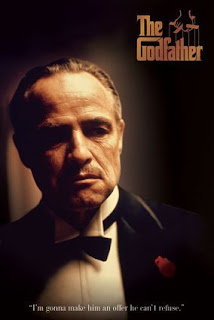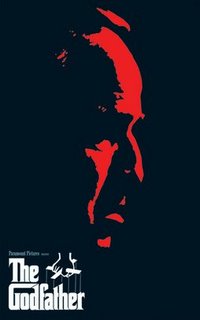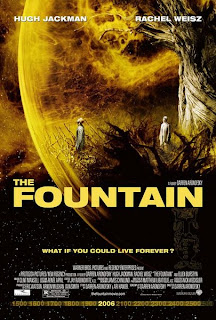Winter Break (plus Bonus Features)
Whew! What a nice weekend it was. A couple of days of sunshine out at the Cabin, and you forget the wind-storms, the snow, the power-outages, the isolation...and the commute...and just appeciate the vast wonders one can see out the window. Sure, it may be colder than sk-ditch, with stray patches of ice everywhere but the sun manages to bake that right our of your brain. Everything seemed crisp, clean amid acres of blue sky and surf. Nothing can break the winter gloom like a sneak preview of Spring. K and I took the pooch out for a couple of good long walks, and if that didn't make a world of difference in his demeanor...and ours.
---------------------------------------------------------------------- Finishing up John D. MacDonald and like every book-break of his I take, I regret that its about to end. I love reading his prose, his observations, his perfect economy of word-choices. Take for example this little bit: "I went north of the mainland route, past an endless wink and sputter of neon..." Every paragraph crackles like that. Wonderful words. And wry observations. Noting the next generation: "Bless the bunnies. These are the new people, and we are making no place for them. We hold the dream in front of them like a carrot, and finally say sorry you can't have any. And the schools where we teach them non-survival are gloriously architectured. They will never live in places so fine, unless they contract something incurable." And Hammett and Chandler raised their glasses in salute.
Finishing up John D. MacDonald and like every book-break of his I take, I regret that its about to end. I love reading his prose, his observations, his perfect economy of word-choices. Take for example this little bit: "I went north of the mainland route, past an endless wink and sputter of neon..." Every paragraph crackles like that. Wonderful words. And wry observations. Noting the next generation: "Bless the bunnies. These are the new people, and we are making no place for them. We hold the dream in front of them like a carrot, and finally say sorry you can't have any. And the schools where we teach them non-survival are gloriously architectured. They will never live in places so fine, unless they contract something incurable." And Hammett and Chandler raised their glasses in salute.
MacDonald wrote four McGee's that first year. He might have thought he was slumming, but the results are high architecture. Sometimes a book can thrill you with the way it's written--"Cold Mountain" was that way. I took a long luxurious time meandering through its prose. Although its a different part of town entirely, I do the same with MacDonald.
The plot's not much: it's the first Travis McGee story and some of the supporting characters aren't there (no Meyer!), and the villain is the rat-bastard-c hild of Max Cady (MacDonald also wrote "The Executioners," which was turned into both versions of "Cape Fear" <1962> and <1991>). McGee's been filmed twice, once with Rod Taylor in the role ("Darker Than Amber"--not too good) and once with Sam Elliott ("The Empty Copper Sea" --Sam's a bit too folksy, but better). Me, I can't think of anybody who'd be a better McGee for right now than Nathan Fillion. After his turn in "Serenity" I can't think of anybody else who could pull off the humor and intelligence and largesse while still giving you the sense he could beat the crap out of you. Plus, he's damned funny, and McGee has to be that. Plus, he could be a boat-bum.
hild of Max Cady (MacDonald also wrote "The Executioners," which was turned into both versions of "Cape Fear" <1962> and <1991>). McGee's been filmed twice, once with Rod Taylor in the role ("Darker Than Amber"--not too good) and once with Sam Elliott ("The Empty Copper Sea" --Sam's a bit too folksy, but better). Me, I can't think of anybody who'd be a better McGee for right now than Nathan Fillion. After his turn in "Serenity" I can't think of anybody else who could pull off the humor and intelligence and largesse while still giving you the sense he could beat the crap out of you. Plus, he's damned funny, and McGee has to be that. Plus, he could be a boat-bum.  Addedum: As I reached the end of the book there was an ad for an audio-book version, read by Darren McGavin. The young McGavin would have been a perfect McGee--handsome, but not handsome enough. He's in your memory as either "Kolchak: The Night Stalker," or "The Old Man" in "A Christmas Story" (Over the holidays I saw an "Old Man" doll...er, action figure...well...doll that had a fair likeness to McGavin and all sorts of chipped phrases). If I remember correctly he holds the record for appearing in the most number of episodes of "Alfred Hitchcock Presents..." probably because he could play good and bad, humor and comedy and variation of the same all equally well.
Addedum: As I reached the end of the book there was an ad for an audio-book version, read by Darren McGavin. The young McGavin would have been a perfect McGee--handsome, but not handsome enough. He's in your memory as either "Kolchak: The Night Stalker," or "The Old Man" in "A Christmas Story" (Over the holidays I saw an "Old Man" doll...er, action figure...well...doll that had a fair likeness to McGavin and all sorts of chipped phrases). If I remember correctly he holds the record for appearing in the most number of episodes of "Alfred Hitchcock Presents..." probably because he could play good and bad, humor and comedy and variation of the same all equally well.
Oh, damn. Just after writing this, it seems they're going to make a movie out of the book I'm reading. Shuddering a little at the thought. They'll probably get Vin Diesel.
-------------------------------------------------------------------
 ----
----K gave in and we watched a movie I wanted to watch--"The Wind and the Lion." She had started it before and stopped because it was violent, involved the Middle-East and had Sean Connery "who never plays anything complicated" (per her) and it just seemed like not something to watch. "Well, give it a chance," I said. "It is a little simplistic, but Milius is too smart a writer to do anything without a little irony." This time it seemed like half the film was horizon shots of tribesmen riding...someplace. But when it's scored by Jerry Goldsmith, you forget that and get caught up in the "sweep." At the end, K. was satisfied, chortling at Milius' visual touches that gave lie to dialogue. "This is one perverse movie." It is. Especially seen in these times. Milius treats his Islamic Berbers with a great deal of admiration, but its tempered with irony, just as, despite his obvious love for Theodore Roosevelt, he can't help but show TR as something of a windy blow-hard and a bit of a petulant child. It's especially interesting to see the film now. An American President wanting respect in the world (and the chance to spread his influence and gain some strategic benefit...all in an election year) embarks on a military crusade to retrieve an American seized by Islamic "pirates." It's all a bit too familiar (and in fact, someone in the Ford administration, when the film was released during the Mayaquez Incident said "We found our 'Patton!'" referring to the inspiration that film had in the bombing of Cambodia). I came away thinking that there's a vast difference between "Theodore Rex" and our current "George Wrecks," who so desperately wants to emulate him. At least we know what the "W" stands for.
------------------------------------------------------------------------
K takes off again for two weeks of work and travel, so it'll be me and the pets for an extended period starting Wednesday. I'm trying to find some time to take in a couple of movie's this week (got the Gang coming up this weekend!), work (TWO freelance gigs on top of the regular work), my niece's birthday on Sunday, and hopefully a couple of job interviews. Fingers X'd.
-----------------------------------------------------------------------
Now, say with me, please, this little phrase "You shouldn't change picture-lock two hours before you ship." Repeat, please. "You shouldn't change picture-lock two hours before you ship." And that goes for double if your audio guy has just done a complicated sound design and mix that taking four seconds in four different places is going to screw UP!
I'm just sayin' is all...
---------------------------------------------------------------------
And thanks to Jon over at "Independence Days" and "Life with Jon" for the nice props (and the new link...it payed off because I got a couple of new readers jumped over from there). I didn't mention in my comment that another reason he should continue his blog is because I'd miss reading it if he did!
----------------------------------------------------------------------
Gasoline is $2.39 a gallon at my referenced gas station. That's a precipitous drop of 20 cents a gallon. While oil is currently at $54.01 a barrel, levelling off a bit after it's dip to $50.00 a couple weeks ago. Last night I splurged and bought the 89 Octane flavor. The car's a bit happier this morning, what with some pampering, some new unbegrimed parts and a couple of spa days at Burien Toyota (cost the same as a spa, anyway). They treated me and my car well. No complaints. Maybe I'll even wash it and scrape the crust from the underbelly. It's been through a lot this Winter.
----------------------------------------------------------------------
Medical Update: My divited digit is almost whole. A couple more days of band-aids and I'll see how the new skin holds up.





















